Paleontology
-
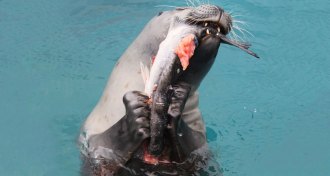 Animals
AnimalsThese seals haven’t lost their land ancestors’ hunting ways
Clawed pawlike forelimbs help true seals hunt like their land-dwelling ancestors.
-
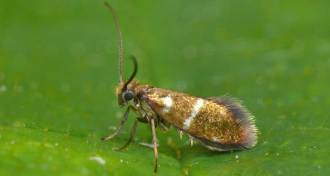 Paleontology
PaleontologyColorful moth wings date back to the dinosaur era
Microscopic structures that scatter light to give color to the wings of modern butterflies and moths date back almost 200 million years.
-
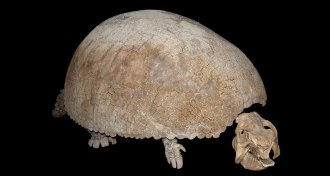 Life
LifeFossils sparked Charles Darwin’s imagination
Darwin’s Fossils recounts how finding extinct species in South America helped Charles Darwin develop his theory of evolution.
By Sid Perkins -
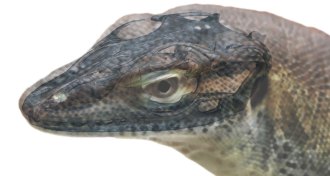 Paleontology
PaleontologyThis ancient lizard may have watched the world through four eyes
A lizard that lived 50 million years ago had both a third and a fourth eye.
-
 Paleontology
PaleontologyReaders debate dinosaur designation and more
Readers had questions about the dino family tree and Venus' habitability.
-
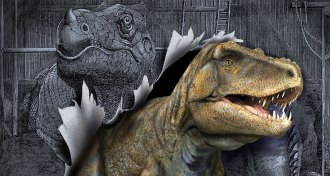 Paleontology
PaleontologyNew fossils are redefining what makes a dinosaur
While some researchers question what characteristics define the dinosaurs, others are uprooting the dino family tree altogether.
-
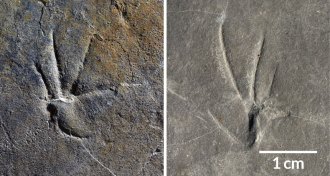 Paleontology
PaleontologyFossil footprints may put lizards on two feet 110 million years ago
Fossilized footprints found in South Korea could be the earliest evidence of two-legged running in lizards.
-
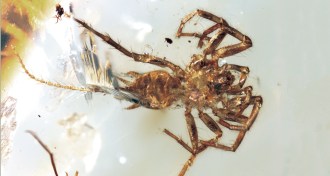 Paleontology
PaleontologyThis ancient creature looks like a spider with a tail
A newly discovered ancient creature looks like a spider and has silk spinners and spidery male sex organs.
By Susan Milius -
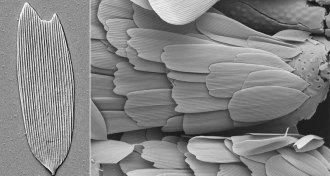 Paleontology
PaleontologyTiny scales in ancient lagoon may be the first fossil evidence of the moth-butterfly line
Fancy liquid-sipper mouthparts might have evolved before the great burst of flower evolution
By Susan Milius -
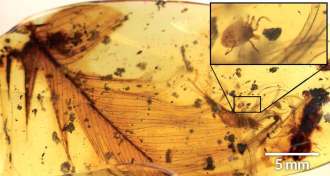 Animals
AnimalsTicks had a taste for dinosaur blood
A tick found trapped in amber is evidence the bloodsuckers preyed on feathered dinosaurs, a new study says.
-
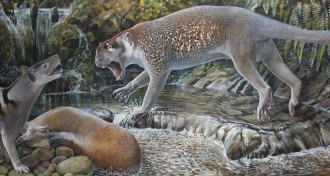 Animals
AnimalsThis ancient marsupial lion had an early version of ‘bolt-cutter’ teeth
Extinct dog-sized predator crunched with unusual slicers toward the back of its jaw.
By Susan Milius -
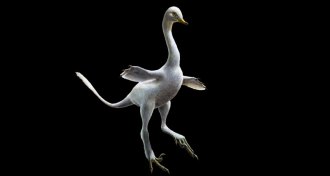 Paleontology
PaleontologyThis new dinosaur species was one odd duck
Weird dino swimmer had flipperlike limbs and a swanlike neck.